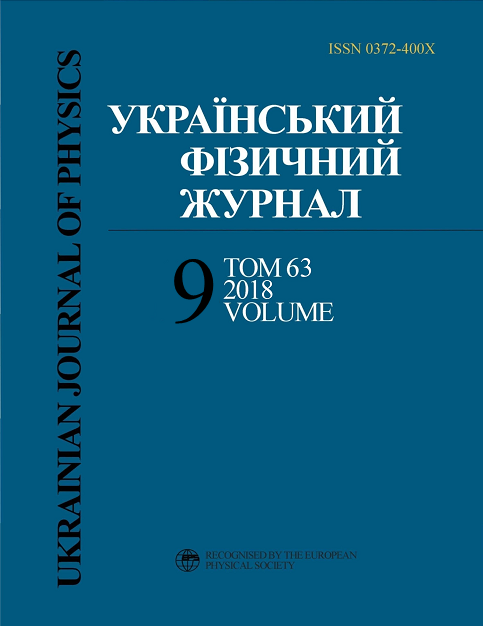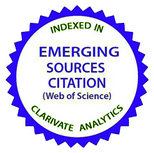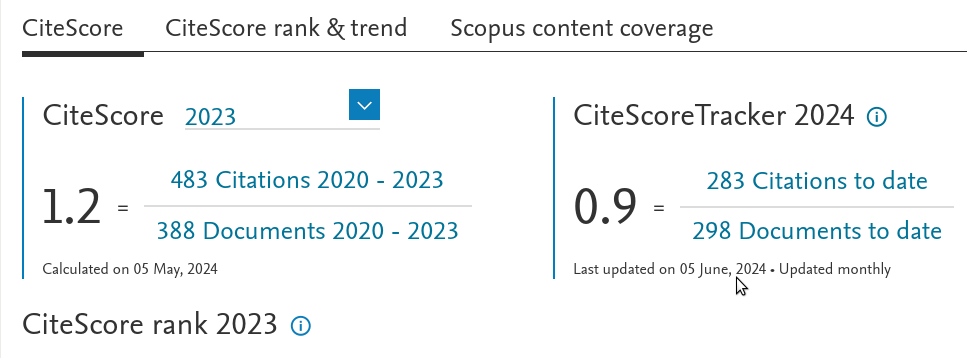Нова модель просторового розподілу густини в гало ферміонної темної матерії
DOI:
https://doi.org/10.15407/ujpe63.9.769Ключові слова:
dark matter: warm, cold, dark matter halo profile, cores, Navarro–Frenk–White profileАнотація
В цiй роботi ми пропонуємо нову модель розподiлу густини в гало, утвореного з теплої темної матерiї. Ця модель описується одним параметром мiкрофiзики – масою частинки темної матерiї (чи, що еквiвалентно, максимальним значенням фазової густини). Знаючи масу частинки темної матерiї та параметри, що описують розподiл густини на периферiї гало, наша модель описує поведiнку густини у внутрiшнiх областях гало. Для випадку початкового розподiлу Фермi–Дiрака, ми успiшно вiдтворили результати симуляцiй [28, 29]. Також, нами були розрахованi радiуси центральних областей для гало карликових сферичних галактик утворених з теплої темної матерiї з масами частинок mFD = 100, 200, 300, 400 еВ.
Посилання
S.D.M. White, C.S. Frenk, M. Davis. Clustering in a neutrino-dominated universe. Astrophys. J. 274, L1 (1983).
https://doi.org/10.1086/184139
S. Tremaine, J. E. Gunn. Dynamical role of light neutral leptons in cosmology. Phys. Rev. Lett. 42, 407 (1979).
https://doi.org/10.1103/PhysRevLett.42.407
L. Bergstr?om. Non-baryonic dark matter: observational evidence and detection methods. Rep. Progr. Phys. 63, 793 (2000).
https://doi.org/10.1088/0034-4885/63/5/2r3
G. Bertone, D. Hooper, J. Silk. Particle dark matter: Evidence, candidates and constraints. Phys. Rep. 405, 279 (2005).
https://doi.org/10.1016/j.physrep.2004.08.031
J.L. Feng. Dark matter candidates from particle physics and methods of detection. Ann. Rev. Astron. Astrophys 48, 495 (2010).
https://doi.org/10.1146/annurev-astro-082708-101659
S. Gardner, G.M. Fuller. Dark matter studies entrain nuclear physics. Progr. Part. Nucl. Phys. 71, 167 (2013).
https://doi.org/10.1016/j.ppnp.2013.03.001
A. Palazzo, D. Cumberbatch, A. Slosar, J. Silk. Sterile neutrinos as subdominant warm dark matter. Phys. Rev. D 76, 10, 103511 (2007).
A. Boyarsky, O. Ruchayskiy, M. Shaposhnikov. The role of sterile neutrinos in cosmology and astrophysics. Ann. Rev. Nucl. Part. Sci. 59, 191 (2009).
https://doi.org/10.1146/annurev.nucl.010909.083654
J.R. Primack. Dark matter and structure formation in the universe. arXiv:astro-ph/9707285.
S.D. M. White, M.J. Rees. Core condensation in heavy halos – A two-stage theory for galaxy formation and clustering. Mon. Not. R. Astron. Soc. 183, 341 (1978).
https://doi.org/10.1093/mnras/183.3.341
G.R. Blumenthal, S.M. Faber, J.R. Primack, M.J. Rees. Formation of galaxies and large-scale structure with cold dark matter. Nature 311, 517 (1984).
https://doi.org/10.1038/311517a0
G.S. Bisnovatyi-Kogan, I.D. Novikov. Cosmology with a nonzero neutrino rest mass. Soviet Ast. 24, 516 (1980).
J.R. Bond, G. Efstathiou, J. Silk. Massive neutrinos and the large-scale structure of the universe. Phys. Rev. Lett. 45, 1980 (1980).
https://doi.org/10.1103/PhysRevLett.45.1980
J.F. Navarro, C.S. Frenk, S.D.M. White. The structure of cold dark matter halos. Astrophys. J. 462, 563 (1996).
https://doi.org/10.1086/177173
J.F. Navarro, C.S. Frenk, S.D.M. White. A universal density profile from hierarchical clustering. Astrophys. J. 490, 493 (1997).
https://doi.org/10.1086/304888
J.E. Taylor, J.F. Navarro. The phase-space density profiles of cold dark matter halos. Astrophys. J. 563, 483 (2001).
https://doi.org/10.1086/324031
A. Boyarsky, O. Ruchayskiy, D. Iakubovskyi. A lower bound on the mass of dark matter particles. J. Cosmol. Astropart. Phys. 3, 005 (2009).
R. Ruffini, L. Stella. On semi-degenerate equilibrium configurations of a collisionless self-gravitating Fermi gas. Astron. Astrophys. 119, 35 (1983).
N. Bili’c, R.D. Viollier. Gravitational phase transition of fermionic matter. Phys. Lett. B 408, 75 (1997).
https://doi.org/10.1016/S0370-2693(97)00825-3
G.W. Angus. A lower limit on the dark particle mass from dSphs. J. Cosmol. Astropart. Phys. 3, 026 (2010).
H. J. de Vega, P. Salucci, N.G. Sanchez. Observational rotation curves and density profiles versus the Thomas–Fermi galaxy structure theory. Mon. Not. R. Astron. Soc. 442, 2717 (2014).
https://doi.org/10.1093/mnras/stu972
H.J. de Vega, N.G. Sanchez. The dark matter distribution function and halo thermalization from the Eddington equation in galaxies. Int. J. Mod. Phys. A 31, 1650073 (2016).
https://doi.org/10.1142/S0217751X16500731
M. Merafina, G. Alberti. Self-gravitating Newtonian models of fermions with anisotropy and cutoff energy in their distribution function. Phys. Rev. D 89 (12), 123010 (2014).
https://doi.org/10.1103/PhysRevD.89.123010
V. Domcke, A. Urbano. Dwarf spheroidal galaxies as degenerate gas of free fermions. J. Cosmol. Astropart. Phys. 1, 002 (2015).
R. Ruffini, C.R. Arg?uelles, J.A. Rueda. On the core-halo distribution of dark matter in galaxies. Mon. Not. R. Astron. Soc. 451, 622 (2015).
https://doi.org/10.1093/mnras/stv1016
P.-H. Chavanis, M. Lemou, F. M?ehats. Models of dark matter halos based on statistical mechanics: The fermionic King model. Phys. Rev. D 92, 12, 123527 (2015).
C.R. Arg?uelles, A. Krut, J.A. Rueda, R. Ruffini. Novel constraints on fermionic dark matter from galactic observables. arXiv:1606.07040 [astro-ph.GA].
S. Shao, L. Gao, T. Theuns, C.S. Frenk. The phasespace density of fermionic dark matter haloes. Mon. Not. R. Astron. Soc. 430, 2346 (2013).
https://doi.org/10.1093/mnras/stt053
A.V. Macci`o, S. Paduroiu, D. Anderhalden, A. Schneider, B. Moore. Cores in warm dark matter haloes: a Catch 22 problem. Mon. Not. R. Astron. Soc. 424, 1105 (2012).
https://doi.org/10.1111/j.1365-2966.2012.21284.x
A.V. Macci`o, S. Paduroiu, D. Anderhalden, A. Schneider, B. Moore. Erratum: Cores in warm dark matter haloes: a Catch 22 problem. Mon. Not. R. Astron. Soc. 428, 3715 (2013).
https://doi.org/10.1093/mnras/sts251
A. V. Macci`o, O. Ruchayskiy, A. Boyarsky, J.C. Mu?noz-Cuartas. The inner structure of haloes in cold + warm dark matter models. Mon. Not. R. Astron. Soc. 428, 882 (2013).
https://doi.org/10.1093/mnras/sts078
D. Anderhalden, A. Schneider, A.V. Macci`o, J. Diemand, G. Bertone. Hints on the nature of dark matter from the properties of Milky Way satellites. J. Cosmol. Astropart. Phys. 3, 014 (2013).
J.S. Bullock, M. Boylan-Kolchin. Small-Scale Challenges to the ?CDM Paradigm, Ann. Rev. Astron. Astrophys 55, 343 (2017).
https://doi.org/10.1146/annurev-astro-091916-055313
J.H. Jeans. On the theory of star-streaming and the structure of the universe. Mon. Not. R. Astron. Soc. 76, 70 (1915).
https://doi.org/10.1093/mnras/76.2.70
D. Lynden-Bell. Stellar dynamics. Only isolating integrals should be used in Jeans theorem. Mon. Not. R. Astron. Soc. 124, 1 (1962).
https://doi.org/10.1093/mnras/124.1.1
C. Efthymiopoulos, N. Voglis, C. Kalapotharakos. Special features of galactic dynamics, in Lecture Notes in Physics edited by D. Benest, C. Froeschle, and E. Lega (Springer, 2007).
G. Contopoulos. A classification of the integrals of motion. Astrophys. J. 138, 1297 (1963).
https://doi.org/10.1086/147724
R.A. Ibata, G. Gilmore, M.J. Irwin. A dwarf satellite galaxy in Sagittarius. Nature 370, 194 (1994).
https://doi.org/10.1038/370194a0
S.R. Majewski, M.F. Skrutskie, M.D. Weinberg, J.C. Ostheimer. A two micron all sky survey view of the sagittarius dwarf galaxy. I. Morphology of the sagittarius core and tidal arms. Astrophys. J. 599, 1082 (2003).
https://doi.org/10.1086/379504
J.D. Simon, M. Geha. The kinematics of the ultrafaint Milky Way satellites: Solving the missing satellite problem. Astrophys. J. 670, 313 (2007).
https://doi.org/10.1086/521816
R. Smith, M. Fellhauer, G.N. Candlish, R.Wojtak, J.P. Farias, M. Bla?na. Ursa Major II – reproducing the observed properties through tidal disruption. Mon. Not. R. Astron. Soc. 433, 2529 (2013).
https://doi.org/10.1093/mnras/stt925
J.L. Carlin, C.J. Grillmair, R.R. Mu?noz, D.L. Nidever, S.R. Majewski. Kinematics and metallicities in the Bo?otes III stellar overdensity: A disrupted dwarf galaxy? Astrophys. J. 702, L9 (2009).
https://doi.org/10.1088/0004-637X/702/1/L9
S. Kazantzidis, J. Magorrian, B. Moore. Generating equilibrium dark matter halos: Inadequacies of the local Maxwellian approximation. Astrophys. J. 601, 37 (2004).
https://doi.org/10.1086/380192
S.H. Hansen, J. Stadel. The velocity anisotropy – density slope relation. J. Cosmol. Astropart. Phys. 5, 014 (2006).
A. Zait, Y. Hoffman, I. Shlosman. Dark matter halos: Velocity anisotropy-density slope relation. Astrophys. J. 682, 835 (2008).
https://doi.org/10.1086/589431
M. Sparre, S.H. Hansen. The behavior of shape and velocity anisotropy in dark matter haloes. J. Cosmol. Astropart. Phys. 10, 049 (2012).
G.A. Mamon, A. Biviano, G. Bou’e. MAMPOSSt: Modelling anisotropy and mass profiles of observed spherical systems – I. Gaussian 3D velocities. Mon. Not. R. Astron. Soc. 429, 3079 (2013).
https://doi.org/10.1093/mnras/sts565
L. Beraldo e Silva, G.A. Mamon, M. Duarte, R. Wojtak, S. Peirani, G. Bou’e. Anisotropic q-Gaussian 3D velocity distributions in ?CDM haloes. Mon. Not. R. Astron. Soc. 452, 944 (2015).
https://doi.org/10.1093/mnras/stv1321
C.A. Vera-Ciro, L.V. Sales, A. Helmi, J.F. Navarro. The shape of dark matter subhaloes in the Aquarius simulations. Mon. Not. R. Astron. Soc. 439, 2863 (2014).
https://doi.org/10.1093/mnras/stu153
K. El-Badry, A.R. Wetzel, M. Geha, E. Quataert, P.F. Hopkins, D. Kere?s, T.K. Chan, C.-A. Faucher-Gigu`ere. When the jeans do not fit: How stellar feedback drives stellar kinematics and complicates dynamical modeling in low-mass galaxies. Astrophys. J. 835, 193 (2017).
https://doi.org/10.3847/1538-4357/835/2/193
A. Eilersen, S. H. Hansen, X. Zhang. Analytical derivation of the radial distribution function in spherical dark matter haloes. Mon. Not. R. Astron. Soc. 467, 2061 (2017).
K. Hayashi, M. Chiba. Probing non-spherical dark halos in the galactic dwarf galaxies. Astrophys. J. 755, 145 (2012).
https://doi.org/10.1088/0004-637X/755/2/145
K. Hayashi, M. Chiba. Structural properties of nonspherical dark halos in Milky Way and Andromeda dwarf spheroidal galaxies. Astrophys. J. 810, 22 (2015).
https://doi.org/10.1088/0004-637X/810/1/22
C.F.P. Laporte, M.G. Walker, J. Pe?narrubia. Measuring the slopes of mass profiles for dwarf spheroidals in triaxial cold dark matter potentials. Mon. Not. R. Astron. Soc. 433, L54 (2013).
https://doi.org/10.1093/mnrasl/slt057
M.G. Walker, J. Pe?narrubia. A method for measuring (slopes of) the mass profiles of dwarf spheroidal galaxies. Astrophys. J. 742, 20 (2011).
https://doi.org/10.1088/0004-637X/742/1/20
A. Genina, A. Ben’?tez-Llambay, C.S. Frenk, S. Cole, A. Fattahi, J.F. Navarro, K.A. Oman, T. Sawala, T. Theuns. The core-cusp problem: A matter of perspective. Mon. Not. R. Astron. Soc. 474, 1398 (2018).
https://doi.org/10.1093/mnras/stx2855
D.J.R. Campbell, C.S. Frenk, A. Jenkins, V.R. Eke, J.F. Navarro, T. Sawala, M. Schaller, A. Fattahi, K.A. Oman, T. Theuns. Knowing the unknowns: Uncertainties in simple estimators of galactic dynamical masses. Mon. Not. R. Astron. Soc. 469, 2335 (2017).
https://doi.org/10.1093/mnras/stx975
N.C. Amorisco, N. W. Evans. A troublesome past: Chemo-dynamics of the fornax dwarf spheroidal. Astrophys. J. 756, L2 (2012).
https://doi.org/10.1088/2041-8205/756/1/L2
N. Ho, M. Geha, R.R. Mu?noz, P. Guhathakurta, J. Kalirai, K.M. Gilbert, E. Tollerud, J. Bullock, R.L. Beaton, S.R. Majewski. Stellar kinematics of the Andromeda II dwarf spheroidal galaxy. Astrophys. J. 758, 124 (2012).
https://doi.org/10.1088/0004-637X/758/2/124
A. del Pino, E.L. Lokas, S.L. Hidalgo, S. Fouquet. The structure of Andromeda II dwarf spheroidal galaxy. Mon. Not. R. Astron. Soc. 469, 4999 (2017).
https://doi.org/10.1093/mnras/stx1195
M.G. Walker, M. Mateo, E.W. Olszewski, R. Bernstein, X.Wang, M.Woodroofe. Internal kinematics of the Fornax dwarf spheroidal galaxy. AJ 131, 2114 (2006).
A. Koch, M.I. Wilkinson, J.T. Kleyna, G.F. Gilmore, E.K. Grebel, A.D. Mackey, N.W. Evans, R.F.G. Wyse. Stellar kinematics and metallicities in the Leo I dwarf spheroidal galaxy-wide-field implications for galactic evolution. Astrophys. J. 657, 241 (2007).
https://doi.org/10.1086/510879
P.M. Frinchaboy, S.R. Majewski, R.R. Mu?noz, D.R. Law, E.L. Lokas, W.E. Kunkel, R.J. Patterson, K.V. Johnston. A 2MASS All-sky view of the Sagittarius Dwarf Galaxy. VII. Kinematics of the main body of the Sagittarius dSph. Astrophys. J. 756, 74 (2012).
https://doi.org/10.1088/0004-637X/756/1/74
A.W. McConnachie. The Observed Properties of Dwarf Galaxies in and around the Local Group. Astron. J. 144, 4 (2012).
https://doi.org/10.1088/0004-6256/144/1/4
M.E. Spencer, M. Mateo, M.G. Walker, E.W. Olszewski. A multi-epoch kinematic study of the remote dwarf spheroidal galaxy Leo II. Astrophys. J. 836, 202 (2017).
https://doi.org/10.3847/1538-4357/836/2/202
A.S. Eddington. The distribution of stars in globular clusters. Mon. Not. R. Astron. Soc. 76, 572 (1916)
https://doi.org/10.1093/mnras/76.7.572
J. Binney, S. Tremaine. Galactic Dynamics (Princeton Univ. Press, 2008).
L.M.Widrow. Distribution functions for cuspy dark matter density profiles. Astrophys. J. Suppl. 131, 39 (2000).
https://doi.org/10.1086/317367
P. Bode, J.P. Ostriker, N. Turok. Halo formation in warm dark matter models. Astrophys. J. 556, 93 (2001).
https://doi.org/10.1086/321541
L. Randall, J. Scholtz, J. Unwin. Cores in dwarf Galaxies from Fermi repulsion. Mon. Not. R. Astron. Soc. 467, 1515 (2017).
https://doi.org/10.1093/mnras/stx161
A. Burkert. The structure of dark matter halos in dwarf galaxies. Astrophys. J. 447, L25 (1995).
https://doi.org/10.1086/309560
C. Di Paolo, F. Nesti, F.L. Villante. Phase-space mass bound for fermionic dark matter from dwarf spheroidal galaxies. Mon. Not. R. Astron. Soc. 475, 5385 (2018).
https://doi.org/10.1093/mnras/sty091
N.C. Amorisco, A. Agnello, N.W. Evans. The core size of the Fornax dwarf spheroidal. Mon. Not. R. Astron. Soc. 429, L89 (2013).
https://doi.org/10.1093/mnrasl/sls031
J.I. Read, G. Iorio, O. Agertz, F. Fraternali. The stellar mass-halo mass relation of isolated field dwarfs: a critical test of ?CDM at the edge of galaxy formation. Mon. Not. R. Astron. Soc. 467, 2019 (2017).
https://doi.org/10.1093/mnras/stx147
P.S. Corasaniti, S. Agarwal, D.J.E. Marsh, S. Das. Constraints on dark matter scenarios from measurements of the galaxy luminosity function at high redshifts. Phys. Rev. D 95 (8), 083512 (2017).
https://doi.org/10.1103/PhysRevD.95.083512
A. Schneider, S. Trujillo-Gomez, E. Papastergis, D.S. Reed, G. Lake. Hints against the cold and collisionless nature of dark matter from the galaxy velocity function. Mon. Not. R. Astron. Soc. 470, 1542 (2017).
https://doi.org/10.1093/mnras/stx1294
N. Menci, A. Merle, M. Totzauer, A. Schneider, A. Grazian, M. Castellano, N.G. Sanchez. Fundamental physics with the hubble frontier fields: Constraining dark matter models with the abundance of extremely faint and distant galaxies. Astrophys. J. 836, 61 (2017).
https://doi.org/10.3847/1538-4357/836/1/61
J.F. Cherry, S. Horiuchi. Closing in on resonantly produced sterile neutrino dark matter. Phys. Rev. D 95 (8), 083015 (2017).
https://doi.org/10.1103/PhysRevD.95.083015
S. Birrer, A. Amara, A. Refregier. Lensing substructure quantification in RXJ1131-1231: A 2 keV lower bound on dark matter thermal relic mass. J. Cosmol. Astropart. Phys. 5, 037 (2017).
V. Ir?si?c, M. Viel, M.G. Haehnelt, J.S. Bolton, S. Cristiani, G.D. Becker, V. D'Odorico, G. Cupani, T.-S. Kim, T.A.M. Berg, S. L’opez, S. Ellison, L. Christensen, K.D. Denney, G. Worseck. New constraints on the free-streaming of warm dark matter from intermediate and small scale Lyman-a forest data. Phys. Rev. D 96 (2), 023522 (2017).
C. Y`eche, N. Palanque-Delabrouille, J. Baur, H. du Mas des Bourboux. Constraints on neutrino masses from Lyman-alpha forest power spectrum with BOSS and XQ-100. J. Cosmol. Astropart. Phys. 6, 047 (2017).
L. Lopez-Honorez, O. Mena, S. Palomares-Ruiz, P. Villanueva-Domingo. Warm dark matter and the ionization history of the Universe. Phys. Rev. D 96 (10), 103539 (2017).
https://doi.org/10.1103/PhysRevD.96.103539
P. Dayal, T.R. Choudhury, F. Pacucci, V. Bromm. Warm dark matter constraints from high-z direct collapse black holes using the JWST. Mon. Not. R. Astron. Soc. 472, 4414 (2017).
https://doi.org/10.1093/mnras/stx2282
J. Baur, N. Palanque-Delabrouille, C. Y`eche, A. Boyarsky, O. Ruchayskiy, ? E. Armengaud, J. Lesgourgues. Constraints from Ly-a forests on non-thermal dark matter including resonantly-produced sterile neutrinos. J. Cosmol. Astropart. Phys. 12, 013 (2017).
N. Menci, E. Giallongo, A. Grazian, D. Paris, A. Fontana, L. Pentericci. Observing the very low surface brightness dwarfs in a deep field in the VIRGO cluster: Constraints on dark matter scenarios. Astron. Astrophys. 604, A59 (2017).
https://doi.org/10.1051/0004-6361/201731237
A. Dekel, J. Silk. The origin of dwarf galaxies, cold dark matter, and biased galaxy formation. Astrophys. J. 303, 39 (1986).
https://doi.org/10.1086/164050
A. Ferrara, E. Tolstoy. The role of stellar feedback and dark matter in the evolution of dwarf galaxies. Mon. Not. R. Astron. Soc. 313, 291 (2000).
https://doi.org/10.1046/j.1365-8711.2000.03209.x
J.I. Read, G. Gilmore. Mass loss from dwarf spheroidal galaxies: The origins of shallow dark matter cores and exponential surface brightness profiles. Mon. Not. R. Astron. Soc. 356, 107 (2005).
https://doi.org/10.1111/j.1365-2966.2004.08424.x
J.I. Read, A.P. Pontzen, M. Viel. On the formation of dwarf galaxies and stellar haloes. Mon. Not. R. Astron. Soc. 371, 885 (2006).
https://doi.org/10.1111/j.1365-2966.2006.10720.x
S. Mashchenko, J. Wadsley, H.M.P. Couchman. Stellar feedback in dwarf galaxy formation. Science 319, 174 (2008).
https://doi.org/10.1126/science.1148666
A. Pontzen, F. Governato. How supernova feedback turns dark matter cusps into cores. Mon. Not. R. Astron. Soc. 421, 3464 (2012).
https://doi.org/10.1111/j.1365-2966.2012.20571.x
F. Governato, A. Zolotov, A. Pontzen, C. Christensen, S.H. Oh, A.M. Brooks, T. Quinn, S. Shen, J. Wadsley. Cuspy no more: how outflows affect the central dark matter and baryon distribution in cold dark matter galaxies. Mon. Not. R. Astron. Soc. 422, 1231 (2012).
https://doi.org/10.1111/j.1365-2966.2012.20696.x
R. Teyssier, A. Pontzen, Y. Dubois, J.I. Read. Cuspcore transformations in dwarf galaxies: Observational predictions. Mon. Not. R. Astron. Soc. 429, 3068 (2013).
https://doi.org/10.1093/mnras/sts563
A. Di Cintio, C.B. Brook, A.V. Macci`o, G.S. Stinson, A. Knebe, A. A. Dutton, J. Wadsley. The dependence of dark matter profiles on the stellar-to-halo mass ratio: A prediction for cusps versus cores Mon. Not. R. Astron. Soc. 437, 415 (2014).
https://doi.org/10.1093/mnras/stt1891
J.I. Read, O. Agertz, M.L.M. Collins. Dark matter cores all the way down. Mon. Not. R. Astron. Soc. 459, 2573 (2016).
https://doi.org/10.1093/mnras/stw713
Downloads
Опубліковано
Як цитувати
Номер
Розділ
Ліцензія
Ліцензійний Договір
на використання Твору
м. Київ, Україна
Відповідальний автор та співавтори (надалі іменовані як Автор(и)) статті, яку він (вони) подають до Українського фізичного журналу, (надалі іменована як Твір) з одного боку та Інститут теоретичної фізики імені М.М. Боголюбова НАН України в особі директора (надалі – Видавець) з іншого боку уклали даний Договір про таке:
1. Предмет договору.
Автор(и) надає(ють) Видавцю безоплатно невиключні права на використання Твору (наукового, технічного або іншого характеру) на умовах, визначених цим Договором.
2. Способи використання Твору.
2.1. Автор(и) надає(ють) Видавцю право на використання Твору таким чином:
2.1.1. Використовувати Твір шляхом його видання в Українському фізичному журналі (далі – Видання) мовою оригіналу та в перекладі на англійську (погоджений Автором(ами) і Видавцем примірник Твору, прийнятого до друку, є невід’ємною частиною Ліцензійного договору).
2.1.2. Переробляти, адаптувати або іншим чином змінювати Твір за погодженням з Автором(ами).
2.1.3. Перекладати Твір у випадку, коли Твір викладений іншою мовою, ніж мова, якою передбачена публікація у Виданні.
2.2. Якщо Автор(и) виявить(лять) бажання використовувати Твір в інший спосіб, як то публікувати перекладену версію Твору (окрім випадку, зазначеного в п. 2.1.3 цього Договору); розміщувати повністю або частково в мережі Інтернет; публікувати Твір в інших, у тому числі іноземних, виданнях; включати Твір як складову частину інших збірників, антологій, енциклопедій тощо, то Автор(и) мають отримати на це письмовий дозвіл від Видавця.
3. Територія використання.
Автор(и) надає(ють) Видавцю право на використання Твору способами, зазначеними у п.п. 2.1.1–2.1.3 цього Договору, на території України, а також право на розповсюдження Твору як невід’ємної складової частини Видання на території України та інших країн шляхом передплати, продажу та безоплатної передачі третій стороні.
4. Строк, на який надаються права.
4.1. Договір є чинним з дати підписання та діє протягом усього часу функціонування Видання.
5. Застереження.
5.1. Автор(и) заявляє(ють), що:
– він/вона є автором (співавтором) Твору;
– авторські права на даний Твір не передані іншій стороні;
– даний Твір не був раніше опублікований і не буде опублікований у будь-якому іншому виданні до публікації його Видавцем (див. також п. 2.2);
– Автор(и) не порушив(ли) права інтелектуальної власності інших осіб. Якщо у Творі наведені матеріали інших осіб за виключенням випадків цитування в обсязі, виправданому науковим, інформаційним або критичним характером Твору, використання таких матеріалів здійснене Автором(ами) з дотриманням норм міжнародного законодавства і законодавства України.
6. Реквізити і підписи сторін.
Видавець: Інститут теоретичної фізики імені М.М. Боголюбова НАН України.
Адреса: м. Київ, вул. Метрологічна 14-б.
Автор: Електронний підпис від імені та за погодження всіх співавторів.

















